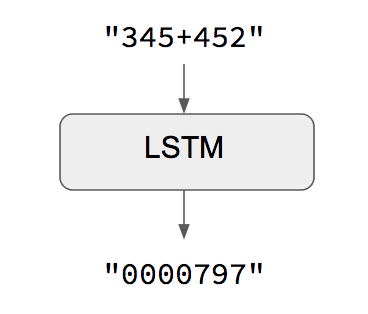Seq2seq RNN with LSTM encoder and decoder to learn how to add two numbers of 4 digits maximum.
File additions.csv contains sequence of operation,answer examples parsed to strings of length 9 for operation and 5 for answer, if an operation or answer does not fit the total lenght then spaces are added.
The reason for this is to normalize the input for the LSTM layers to get a result somewhat like the presented below.
The encoder is a LSTM layer (lstm_1) that produces as output a vector of size 128 the output is then repeated 5 times (max possible length of lstm_1 output vector), this leads to a shape of (5,128) that works as input for another LSTM layer (lstm_2) that works as decoder. Finally, a dense layer maps the output of the decoder to predict the next char as a temporal slice of that output.
To replicate the results, the train.py file inspired in this keras example encapsulates the entire process. For changes in the train data refer to load_data.py
predict.py uses trained weights "addition_model.hdf5" to run an infinite loop predicting the user's inputs.
I also build an API to test it online (https://rest-adder-api.appspot.com/). Just send a GET request passing the add problem as "operation" to test it
Go to https://rest-adder-api.appspot.com/ and add the operation parameter. For "+" use %2B. For example, to the operation 4444+10 must be writen as ?operation=4444%2B10. Thus, the url will be as follows https://rest-adder-api.appspot.com/?operation=4444%2B10


